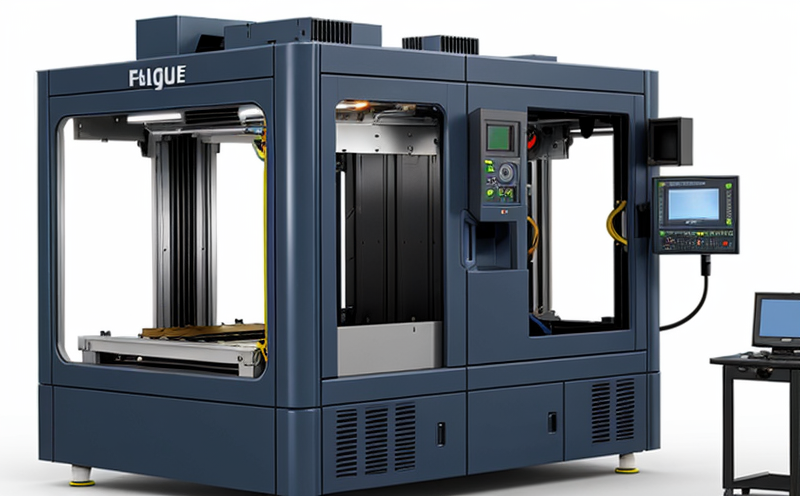ISO 12111 Fatigue Crack Growth by Constant Amplitude Loading
The ISO 12111 standard is a critical benchmark in the field of Additive Manufacturing (AM) and 3D printing, particularly for evaluating the fatigue behavior of printed components. This testing method focuses on the life prediction of parts subjected to cyclic loading, ensuring that additive manufactured items are reliable and safe for their intended applications.
The standard is essential because it addresses a significant challenge in AM: the variability inherent in the manufacturing process can lead to differences in mechanical properties compared to conventionally produced components. ISO 12111 provides a standardized approach to quantifying these variations, enabling manufacturers and engineers to make informed decisions about material selection and design optimization.
The testing method involves subjecting specimens to constant amplitude cyclic loading until fatigue cracks initiate or grow to a critical size. This process is crucial for lifecycle prediction, as it helps identify the point at which components might fail under operational stress. The test parameters are carefully controlled to simulate real-world conditions, making the results highly relevant and predictive of field performance.
One of the key aspects of ISO 12111 is its focus on crack initiation and growth. By monitoring these phenomena, engineers can determine the fatigue life of a part with high precision. This information is invaluable for designing parts that meet safety standards and operational requirements. The standard also emphasizes the importance of specimen preparation, ensuring that tests are as representative as possible of real-world conditions.
The cyclic loading used in this method simulates the repetitive stress experienced by components in their operational environment. Understanding how materials behave under these conditions is crucial for predicting service life and potential failure modes. The results can inform design improvements, material selection, and manufacturing process optimization to enhance reliability and safety.
ISO 12111 is widely accepted across various industries that rely heavily on AM technology, including aerospace, automotive, medical devices, and more. Its rigorous testing protocols ensure that additive manufactured parts meet stringent quality standards, providing a foundation for trust in the use of these materials.
In summary, ISO 12111 is a vital tool in ensuring the reliability and longevity of additively manufactured components. By providing a standardized approach to fatigue crack growth testing, it helps manufacturers achieve higher levels of quality assurance and product safety.
Applied Standards
| Standard Name | Description |
|---|---|
| ISO 12111-1:2014 | General requirements for fatigue testing of metallic materials and components. |
| ASTM E845-18 | Standard test method for fatigue crack growth rate determination by constant-amplitude loading in tension-tension or torsion-torsion modes. |
Quality and Reliability Assurance
The ISO 12111-1 standard establishes the general requirements for fatigue testing, ensuring that the tests conducted are consistent and reproducible. This consistency is crucial for obtaining reliable data that can be used to make informed decisions about part design and material selection. The method involves subjecting specimens to cyclic loading until crack initiation or growth occurs.
Specimen preparation plays a critical role in achieving accurate results. Proper specimen preparation ensures that the test conditions are as close as possible to real-world usage, enhancing the predictive value of the testing outcomes. This includes careful consideration of geometry, size, and orientation relative to the loading direction.
The cyclic loading process simulates the stress cycles a component will experience in its operational environment. By monitoring crack initiation and growth under these conditions, engineers can predict the fatigue life of the part with high accuracy. This information is invaluable for ensuring that parts meet not only safety standards but also performance expectations.
Post-test analysis involves detailed examination of the specimens to determine the extent of crack propagation. This data helps in validating the test results and identifying any discrepancies between expected outcomes and actual behavior. Such insights are essential for continuous improvement of both manufacturing processes and materials used in AM.
International Acceptance and Recognition
The ISO 12111 standard is internationally recognized and widely adopted, ensuring a consistent approach to fatigue testing across different regions. This global acceptance facilitates collaboration between manufacturers and researchers worldwide, promoting the exchange of best practices and innovative solutions.
By adhering to this standard, organizations can demonstrate their commitment to quality and reliability, enhancing trust with customers and regulatory bodies alike. The international recognition also ensures that parts tested against ISO 12111 standards are compatible across borders, streamlining supply chains and facilitating trade.
The widespread adoption of ISO 12111 highlights its importance in the AM industry. As additive manufacturing continues to evolve, the standard remains a cornerstone for ensuring the reliability and safety of parts produced using this technology. Its rigorous testing protocols provide a foundation for continuous improvement and innovation in the field.
Organizations that embrace ISO 12111 demonstrate their dedication to maintaining high standards of quality and reliability. This commitment not only enhances product performance but also contributes to the broader industry’s advancement, ensuring that additive manufactured components meet the highest safety and performance criteria.





